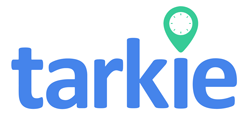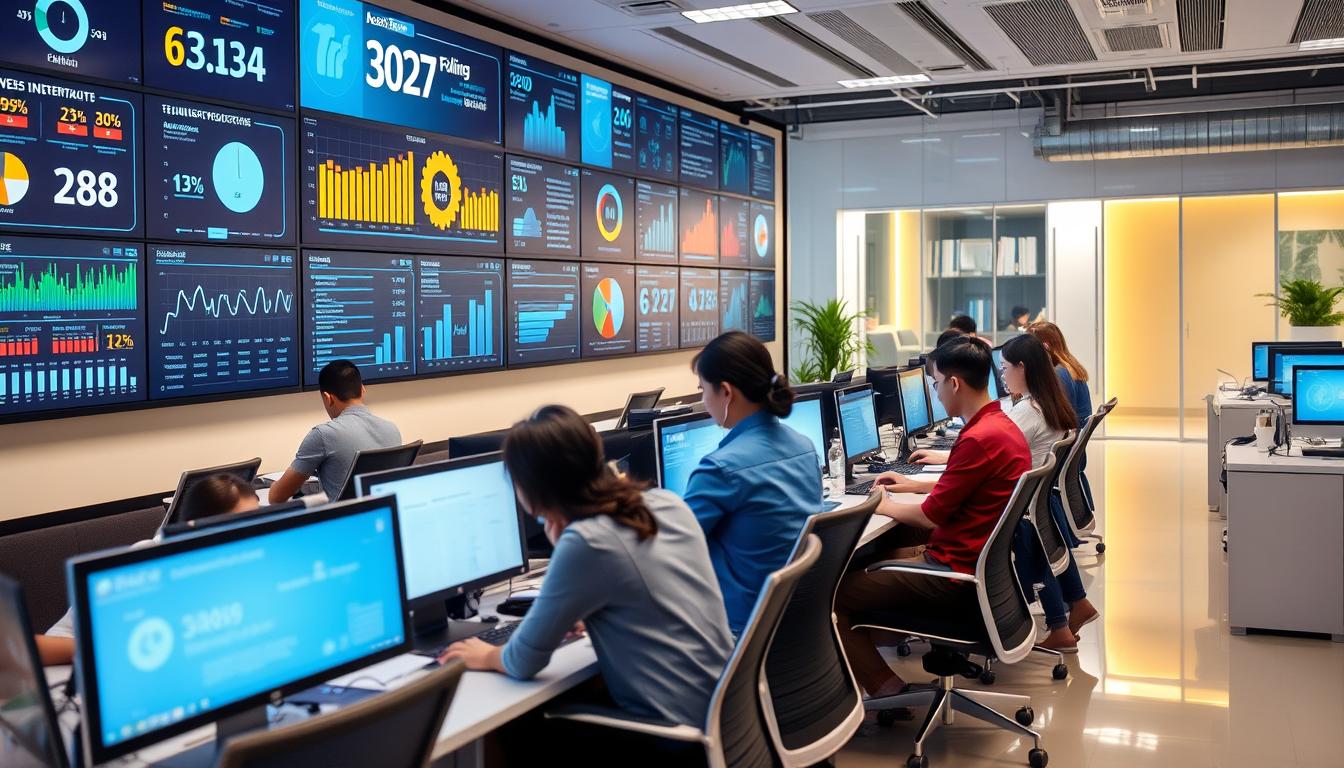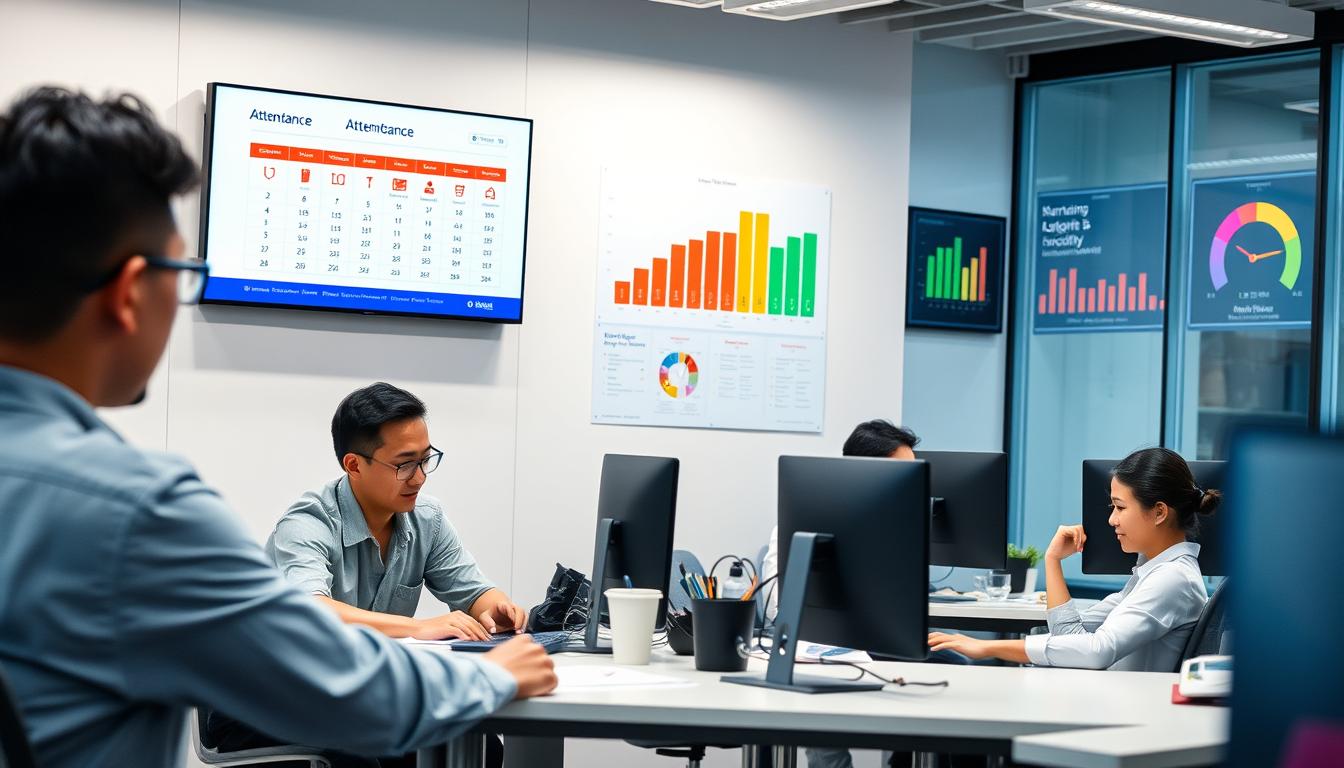Ever thought about how much of your employees’ time is really productive? Less than 60% of work hours are effective. This is a big problem for Small and Medium Enterprises (SMEs) in the Philippines. They need a better way to manage productivity.
Real-time attendance monitoring is a solution. It uses technology to track hours worked. This helps improve how much employees get done.
Old ways of tracking attendance can waste up to 20% of productivity. This article will show how real-time monitoring changes things. It makes work more efficient, payroll accurate, and keeps employees focused.
By using these systems, businesses can see big improvements. Employee happiness and the company’s success can both go up.
Key Takeaways
- Real-time attendance monitoring can boost employee output significantly.
- Less than 60% of work hours are productive; improvements could lead to substantial efficiency gains.
- Happy workers, supported by real-time tracking, can be 13% more productive.
- Engaged employees can drive revenue growth by up to 21% for their organizations.
- Effective time tracking helps identify inefficiencies and improve overall productivity.
- Reducing administrative overhead through accurate systems allows more focus on core business activities.
- Collecting employee feedback can correlate with higher productivity levels and workplace morale.
The Importance of Real-Time Attendance Monitoring
Real-time attendance monitoring is key to boosting employee output. Advanced technology, like time and attendance software, tracks work hours with high precision. Old methods can have errors from 5% to 20%.
Switching to automated systems, like facial recognition, cuts down these mistakes. Data shows attendance accuracy can hit 99% with real-time systems, compared to traditional methods.
Real-time monitoring cuts down on administrative work and boosts productivity. Studies show a 30% to 50% drop in admin tasks with systems like RTAMT-FR. This means a 15-minute reduction in attendance processing time per session.
Real-time systems also help make quick, informed decisions. Managers can tackle absenteeism issues fast, reducing rates by up to 40%. This quick action boosts morale and fosters a sense of responsibility among employees.
In the Philippines, real-time attendance solutions have made a big difference. Businesses and schools see better compliance with labor laws and better resource management. A survey found 75% of respondents believe these systems improve accountability.
Challenges in Traditional Attendance Tracking Methods
Traditional ways of tracking attendance often face big problems. These methods can lead to mistakes in logging shifts, breaks, and overtime. This can cause payroll errors, with some companies possibly overpaying by 30%.
Incorrect time reporting can lead to big fines, from $1,000 to $10,000. Over 50% of companies with manual tracking face payroll disputes monthly. This leads to extra work and frustration for employees.
Time theft is another big issue, costing businesses about 7% of their payroll. This means a loss of around $3,600 a year for each salaried worker. Remote work makes tracking attendance even harder, with a 15-20% increase in challenges.
With operational costs rising by 30% for manual systems, the need for better solutions is clear. Modern attendance tracking tools can help fix these problems. They make processes smoother, reduce errors, and boost efficiency. For more on how to link attendance tracking with payroll, see this useful guide.
How Real-Time Monitoring Enhances Employee Output
Real-time monitoring changes the workplace for the better. It boosts employee output and makes work more efficient. This new way of tracking attendance makes everyone happier and more productive.
Improved Accuracy in Time Tracking
Real-time monitoring makes tracking time more accurate. Automated systems record exact times, reducing errors. This fair tracking motivates employees and boosts their engagement.
Biometric systems and digital logging improve attendance tracking by up to 30%. Companies using these tools see a 20% rise in productivity. This is thanks to better accountability.
Reduction in Administrative Overhead
Automated systems ease HR’s workload. They help manage attendance logs, freeing HR to focus on more important tasks. This includes tracking employee performance and developing talent.
Studies show companies using real-time monitoring save up to 40% of administrative time. This not only optimizes the workforce but also boosts overall productivity.
| Benefit | Impact on Employee Output |
|---|---|
| Improved Accuracy in Time Tracking | 20% increase in productivity, enhanced motivation |
| Reduction in Administrative Overhead | 40% less time spent on administrative tasks |
| Engagement through Technology | Greater adherence to attendance protocols and fewer absences |
| Real-time Insights | Increased transparency and accountability in employee performance tracking |
Benefits of Real-Time Attendance Systems
Real-time attendance systems greatly improve workforce productivity. They make it clear that everyone’s attendance is being watched. This makes employees more responsible and on time.
This awareness helps the team work better together. It also makes the whole work process smoother.
Increased Transparency and Accountability
Automated time and attendance systems are key for measuring performance. They help managers keep track of who’s working and when. This makes it easier to manage the team and payroll.
Manual tracking can cause problems, like buddy punching. This is when someone lets someone else clock in for them. It can cost a lot of money. Real-time systems stop these issues, saving money and ensuring fair pay.
These systems also let employees check their hours and time off. This makes them feel more in control and responsible. It also makes them happier and less likely to leave their jobs.
Companies that use these systems work better every day. They become more open and fair places to work.
| Benefits | Description |
|---|---|
| Enhanced Employee Accountability | Increases responsibility and punctuality among staff. |
| Improved Performance Measurement | Enables precise assessment of employee behavior. |
| Reduced Payroll Errors | Minimizes financial losses from buddy punching and time theft. |
| Boosted Morale | Higher employee satisfaction and reduced turnover rates. |
| Operational Efficiency | Streamlines payroll processes and reduces administrative burden. |
Choosing the Right Attendance Monitoring Software
Choosing the right attendance monitoring software is key to boosting employee output. Businesses have many options. It’s important to look for features that meet specific needs and help track employee performance well.
Key Features to Look For
When picking attendance monitoring software, look for these important features:
- Biometric Authentication: This feature boosts security and accuracy. It stops unauthorized clocking, making sure only real data is recorded.
- Real-Time Data Access and Reporting: Managers can see attendance trends right away. This helps them make better decisions about employee attendance.
- Integration with Payroll Systems: Smooth integration helps with accurate overtime and shift work. It also cuts down on manual entry mistakes.
- Employee Self-Service Portals: These let employees check their schedules and manage leave. They help employees feel more in control and engaged.
In the Philippines, small and medium businesses should focus on these features. They can greatly improve employee efficiency. Knowing what different industries need helps companies use time and attendance software better. This boosts productivity and ensures they follow rules.
Implementing Real-Time Attendance Tracking in the Workplace
Real-time attendance tracking is key for today’s workforce management. First, assess your needs carefully. Make sure your system meets local labor laws. Getting your team involved helps them accept new systems better.
Training on new software eases tech worries. When employees know how to use it, they feel more comfortable. Regular checks on the system help improve it, meeting your productivity goals.
Real-time tracking lets managers see who’s in or out instantly. This cuts down on time spent on attendance by 50%. It also makes payroll more accurate, reducing errors by 1-5%.
Good tracking systems can boost productivity by 10%. They link attendance to performance. This helps in managing labor costs and improving employee engagement.
- Companies can boost employee engagement by 15-30% with smart management.
- Tracking attendance helps spot trends in absenteeism, which can be over 20% in bad cases.
- Managing attendance across multiple offices is easy, even for over 100 remote workers.
Attendance software gives detailed reports, helping save 5-15% on labor costs. It lets HR teams track attendance and promote accountability. Reducing unauthorized absences can cut them by 40%.
Adding real-time attendance tracking boosts efficiency in managing employee performance. It can lead to a big drop in absenteeism, up to 30%. This shows how valuable such a system is for effective workforce management.
Maximizing Employee Output with Real-Time Monitoring and Attendance Tracking
Real-time monitoring and attendance tracking are key to boosting workplace productivity. By using dynamic attendance systems, companies gain insights into how well employees are doing. For example, Flowace has helped increase productivity by 31%.
Real-time monitoring makes managing productivity easier. Businesses that use automated attendance tracking save on labor costs. They also reduce HR tasks and make payroll more accurate.
Accurate hour tracking means employees get paid on time. This builds trust and satisfaction among employees.
- Immediate access to attendance data allows managers to address issues promptly, enhancing efficiency.
- Biometric systems mitigate buddy punching and improve overall attendance accuracy.
- GPS-based solutions accurately track mobile and remote employees, ensuring fair management.
Automated systems cut down on errors in logging work hours. This helps in managing productivity better. Companies can then adjust staffing and resources based on attendance patterns.
| Benefit | Impact |
|---|---|
| Reduction in Time Theft | Up to 50% with biometric systems |
| Employee Accountability Increase | 30% boost from better visibility |
| Enhanced Compliance with Labor Laws | Up to 70% improvement |
| Decrease in Employee Tardiness | Up to 20% reduction following system adoption |
Real-time attendance monitoring boosts productivity and builds a culture of transparency. It makes employees feel valued and recognized. This leads to a more engaged and productive workforce, helping companies reach their goals.
Case Studies: Successful Implementation in the Philippines
In the Philippines, real-time attendance tracking has made a big difference. KAMI Workforce, trusted by over 35,000 users, offers employee monitoring software. It gives real-time insights and accurate records, making workplaces more organized.
A big retail chain in the country used a real-time monitoring system. It cut down manual timekeeping from five days to two, even with more employees. This change saved 36 hours per payroll run, making processes smoother.
A growing tech firm used automated time tracking tools. This move cut their HR costs by 50%. The tools also gave them better performance analytics, helping them understand team and individual productivity.
| Company | Key Benefits | Workforce Productivity Improvement |
|---|---|---|
| KAMI Workforce |
|
Increase in accuracy and speed of payroll processing |
| Retail Chain |
|
Significant operational efficiency |
| Tech Firm |
|
25% increase in sales staff productivity |
These examples show how real-time attendance tracking changes businesses. Companies that use these systems get better productivity and a more efficient work environment.
Conclusion
In today’s fast-paced work world, it’s key to boost employee output. Real-time monitoring and attendance tracking are crucial. They help solve old attendance problems and improve how we manage work.
These modern systems bring accuracy and accountability to the workplace. They help companies work better and make their teams more efficient.
Many companies, like Workstatus, have over 500K active users. They track 21 million hours of work. A Delhi startup saw a 35% ROI boost by using real-time attendance.
Also, hybrid work setups show a 40% productivity jump. This shows how important it is to track work hours well.
Using good attendance tracking is more than just a work tweak. It’s a big step toward having happier and more productive employees. Small businesses in the Philippines can use these tools to stay ahead and grow.




